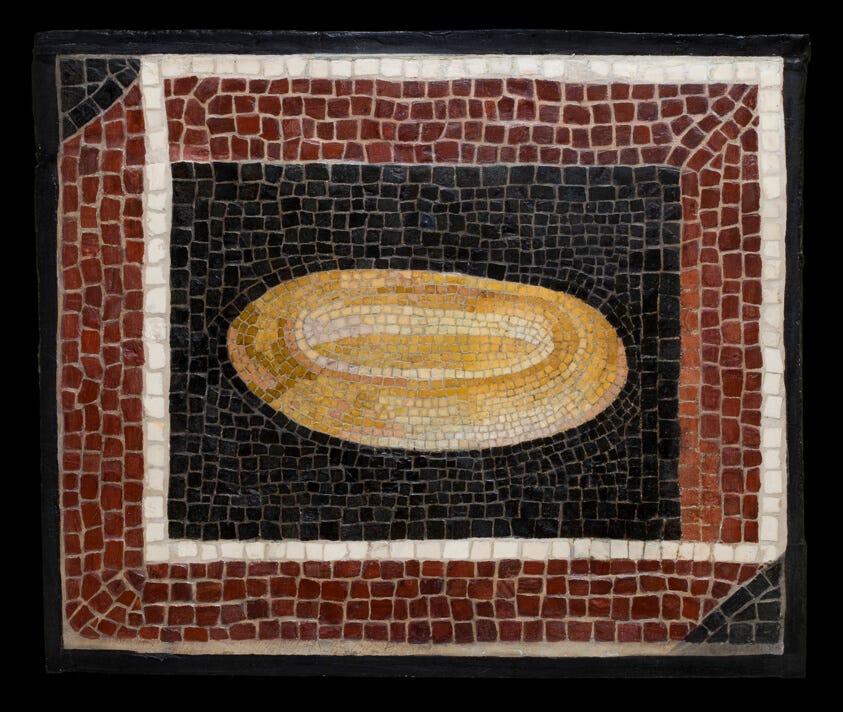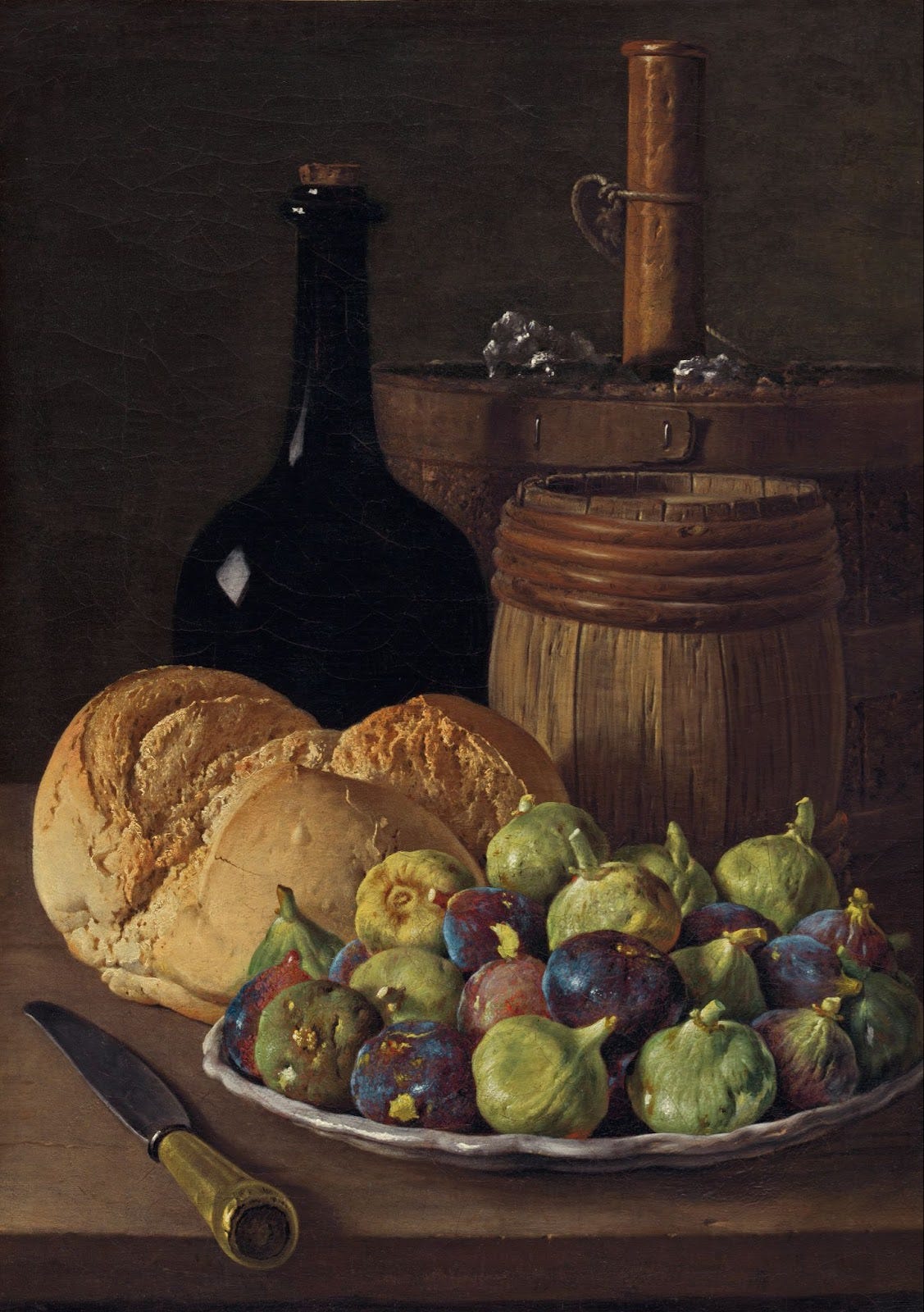Bread at dawn
History, Culture, and Paintings. Happy holidays, and happy new year!
Hello, thank you for reading Vertientes y Tangentes (Slopes and Tangents). If you like what I share and want to support me, and receive notifications every time I post something, be sure to subscribe; It's free. If you want to support me with $5 a month, you'll have access to extra content. You can also support me by sharing my content through your social media, and commenting on the posts.

There are foods that are universal. Things like rice, eggs, pasta, and sausages are in almost every culture; and then there is bread. For thousands of years, before the advent of agriculture, humans been eating bread. There is something about it.
I love making bread and enjoying its warming love, taste, and aroma. Nothing like the smell of freshly baked bread at the dawn of day!
This is going to be my last publication this year, and thinking about what to write about, as a form of therapy, the idea of bread came to me like an impulse. Bread is a food that I consume a lot in difficult times, and that I bake a lot in special moments. There isn't a day in my life when I don't want a good piece of bread. It is a food that transcends beliefs and heals the pains of the soul.
Today I share with you some data -historical and cultural- about bread, and although there is no recipe, nor is the writing Christmas-worthy, bread is something that has gained its presence at any time. Happy Holidays and happy new year!
“No bread, no life”
Bread feeds and soothes people in all societies, from hunter gatherers to the wealthiest richest people on earth. And let's not talk about the constant mention and powerful presence of bread in religion and mythology; and throughout history. More so, national strikes and wars have happened because of it.
Sometimes bread is the only thing people have to eat, and it means everything; even dying for it. “No bread no life”, said woman in a documentary show I watched a while ago.
Back in the late seventeen hundreds, in France, after the price of bread increased dramatically, the Flour War started. This situation caused some 300 riots throughout the country. They say that these were one of the “first physical manifestations that led to the French Revolution.”
Such a simple and yet complex food, with only two main ingredients -flour and water- has inspired cultural and social changes. Take the arts for example. From fine arts to the written word there are countless artistic representations of it. Here is a poem I found in the Jewish Women’s Archive (and which has left me with teary eyes and a tangled throat):
"Bread and Roses" By Oppenheim, James (1911)
As we go marching, marching, in the beauty of the day,
A million darkened kitchens, a thousand mill lofts gray,
Are touched with all the radiance that a sudden sun discloses,
For the people hear us singing: Bread and Roses! Bread and Roses!
As we go marching, marching, we battle too for men,
For they are women's children, and we mother them again.
Our lives shall not be sweated from birth until life closes;
Hearts starve as well as bodies; give us bread, but give us roses.
As we go marching, marching, unnumbered women dead
Go crying through our singing their ancient call for bread.
Small art and love and beauty their drudging spirits knew.
Yes, it is bread we fight for, but we fight for roses too.
As we go marching, marching, we bring the greater days,
The rising of the women means the rising of the race.
No more the drudge and idler, ten that toil where one reposes,
But a sharing of life's glories: Bread and roses, bread and roses.
Our lives shall not be sweated from birth until life closes;
Hearts starve as well as bodies; bread and roses, bread and roses.
The dawn of bread
It is said that bread started as a flat type of dough (a.k.a. flatbread/tortillas) until someone -an Egyptian, a Babylonian or a Hebrew (there are different theories)- forgot a bread dough and it began fermenting and growing. Thus, the beginning of a new era, leavened bread (Sourdough / Masa Madre).
Generally eaten, bread has also been used as a platter to serve food on (tacos, pizza), a cooking vessel (empanadas, pies, Wellington); and as an eating utensil (pita, nan). Bread is on almost every table and it has been throughout history, even in paintings and sculptures. Here are a few ancient paintings related to bread.



That last piece of art -Still Life with Figs and Bread- is especially interesting to me, because the person who painted it, Luis Meléndez, carried my mother’s last name.
The breads of the world
It is estimated that there are over 100 different types of bread in the world. It is also said that about 32 million tons are produced per year worldwide. One would think that mixing some kind of flour with water would result in the same product everywhere.
Sometimes, we become too used to what we like to eat; or to what we have been eating because of access, or culture and traditions. But there are many breads that deserve to be tasted and recognized as one of the best things that humanity has created. Each bread has its unique recipe depending on what kind of flour is available, climate, religious beliefs, and even political situation.
Here is a list of different breads from all over the world1.
Austria: Kugelhopf
China: Bao
England: Muffins
Finland: Rieska
France: Baguette
Germany: Pretzel
India: Chapatti
Iran: Lavash
Israel: Bagels
Italy: Focaccia
Mexico: Tortillas
Middle East/North Africa: Barbari
Poland: Potato Bread
Russia: Pryanik
Scotland: Bannocks
Sweden: Limpa
USA: Cornbread
Of the breads that you have tried, what is your favorite one, and what do you eat it with? Leave your comments below.
Ward, S., Clifton, C., & Stacey, J. (1997). The Gourmet Atlas: History, Origin, and Migration of Foods of the World. Macmillan.


